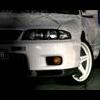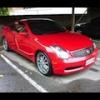Adjustable Spoiler
Announcements
-
Similar Content
-
Latest Posts
-
I can't believe that anyone is foolish enough to believe that the base maps are for any other purpose than to drive the car up onto the trailer/truck or gently creep it to the dyno. No matter how good they are, they can never be any better than the factory maps**, and only the foolish trust those on a significantly modified setup. **Yeah, yeah. I know there's also the difference between factory maps being fixed to certain injector sizes and MAP/AFM/VE relationships, and the likely aftermarket ECU base maps being better able to handle the sorts of changes that would render a stock ECU dangerous, like different sized injectors. But let's just ignore that for the moment, because the principle is still the same.
-
I'm shocked, you've owned a Skyline since 2006 and never joined SAU before now! 😮 Welcome, it's much quieter these days than it was in 2006, but lots of very knowledgeable ones lurk around here. I actually think in outage we've forgotten more about Skylines than anyone knows about them today... 😛
-
So it could give us some info. Such as we find out what number they started at, and we know how many of those blocks came before it.
-
Everyone wants an ECU they can plug onto their engine, modified or not, and put of the box it just runs perfectly like a brand new modern engine straight off the production line. Too many people just don't understand things like the base maps are as you said, just to give a starting point, and then you need to spend time getting it right for your vehicle. I wonder if the people wanting it are the same ones who'll just buy a chip for a "stage 2 tune" online and then wonder why their engine blew up...
-





Recommended Posts
Create an account or sign in to comment
You need to be a member in order to leave a comment
Create an account
Sign up for a new account in our community. It's easy!
Register a new accountSign in
Already have an account? Sign in here.
Sign In Now